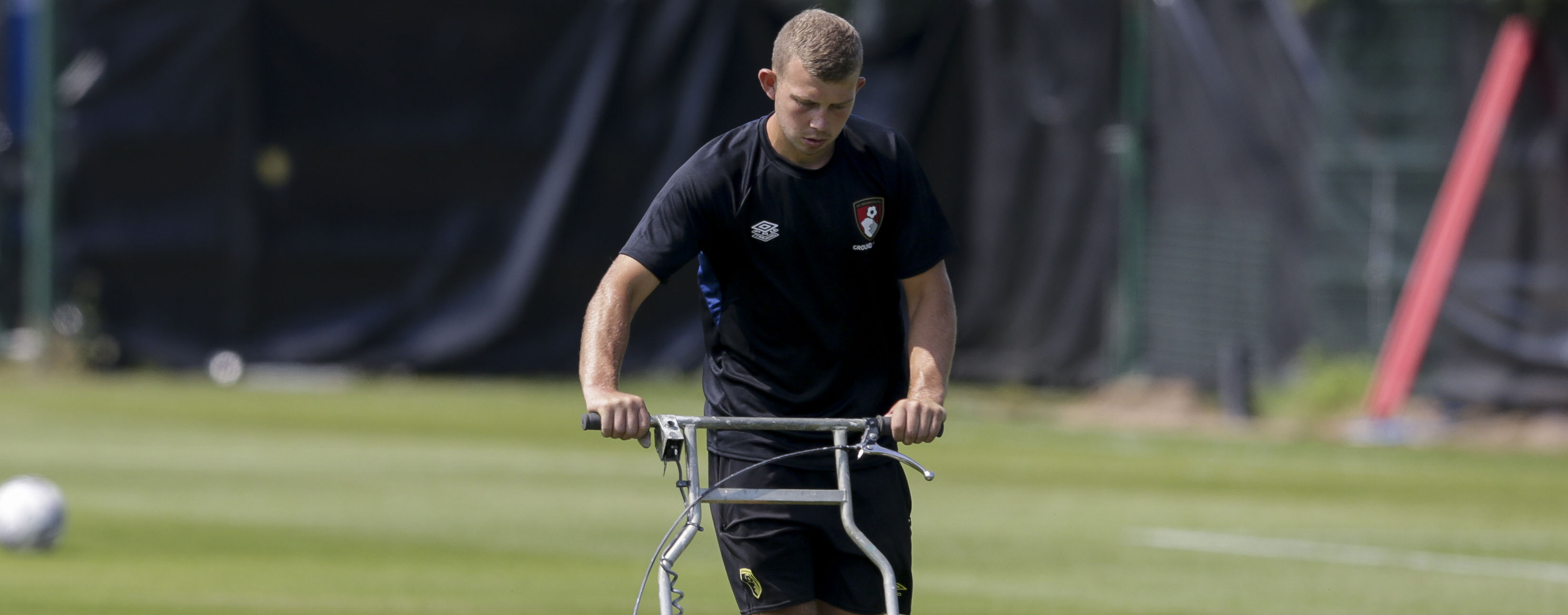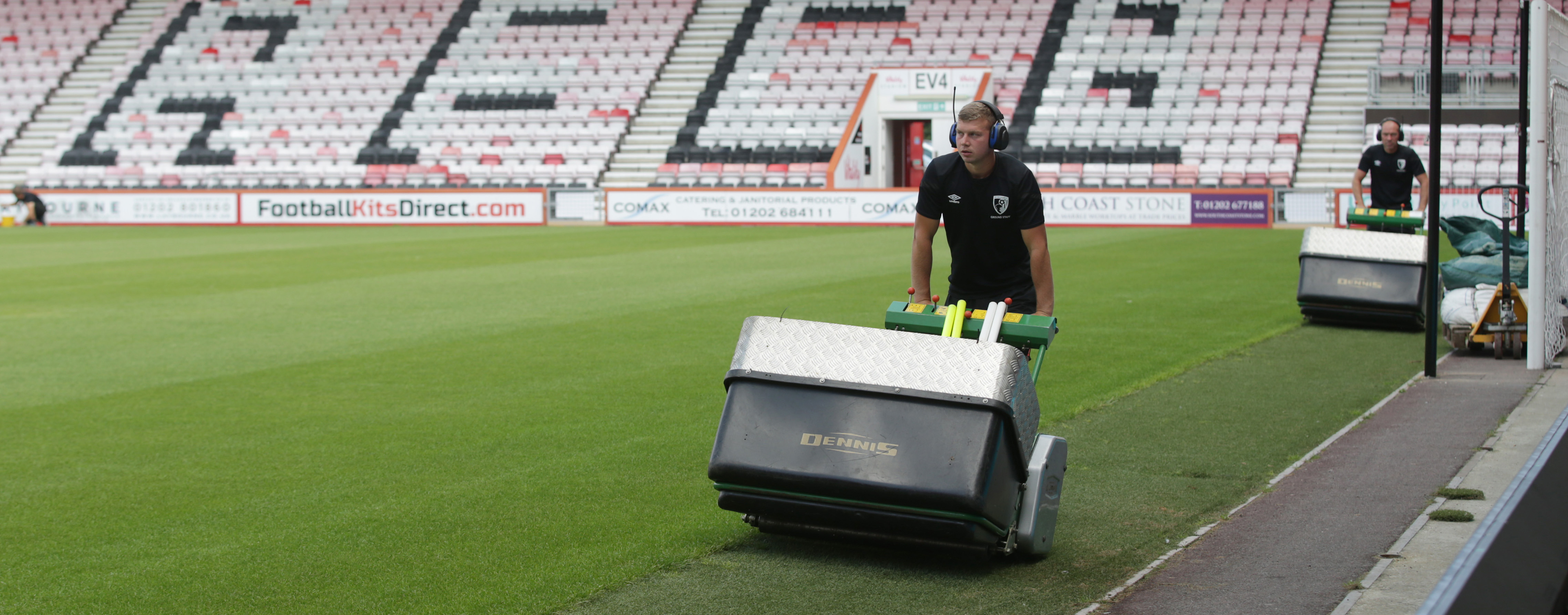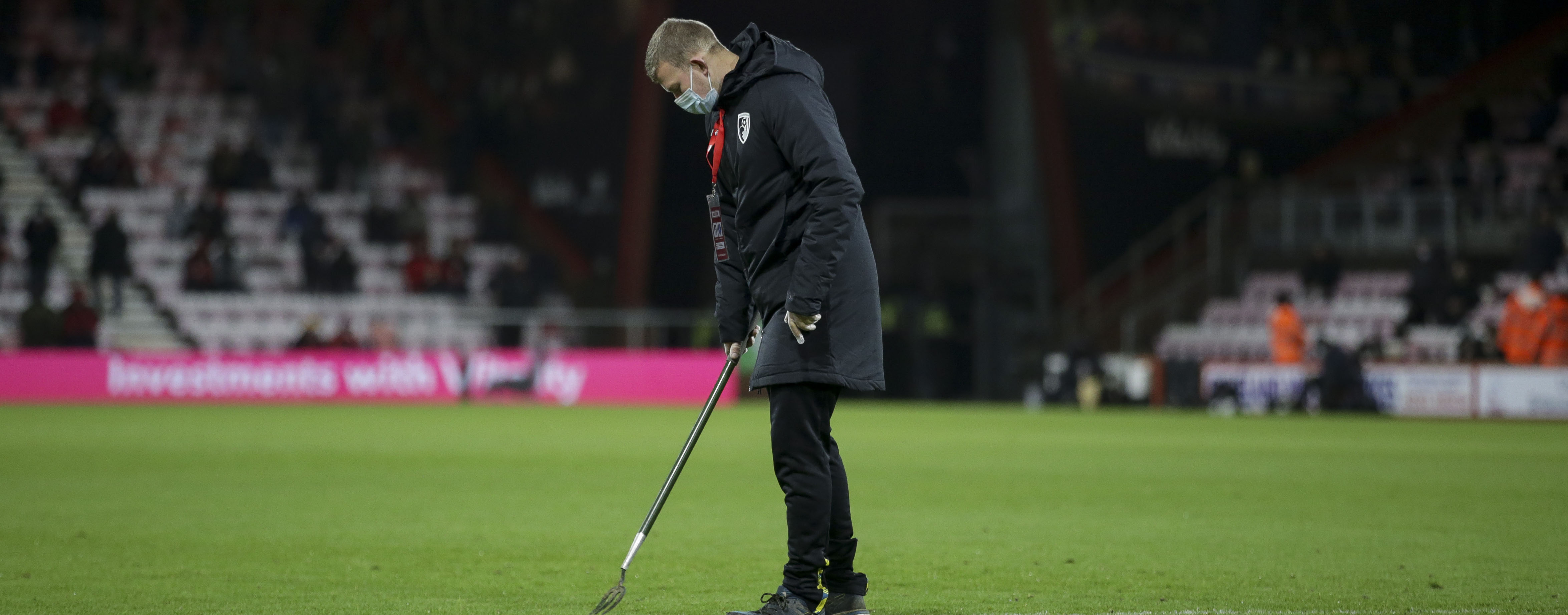
One of the most important roles at a football club, but one that always goes relatively unnoticed.
The job of a groundsman is certainly not a glamorous one and, come rain or shine, those up and down the country are tasked with the maintenance of pitches, greens and other outdoor areas.
In football, a grounds team is absolutely pivotal as, without them, the game simply doesn’t go ahead.
This week is being celebrated as Grounds Week, with clubs up and down the country highlighting the vital contribution of staff and volunteers in this line of work.
As a result, we spoke to the club’s Deputy Grounds Manager, Dan Sutherland, who has worked at AFC Bournemouth for eight years.
He is one of eight grounds staff currently at the club, with two based at the stadium, three on the training ground and three at Canford Park Arena, the home of our academy.
Dan took part in a question-and-answer session with afcb.co.uk to shed some light on the key role his team play at AFC Bournemouth.

How did you get into groundskeeping?
At school, I wanted to be a physio, but I didn’t get into it as much as I thought I might. I always wanted to work in football and had helped my dad out on a local football pitch. I really enjoyed it and then decided to pursue a career in it. I went to college, got my Level Two qualifications and progressed from there. I started on a golf course, then went to a private school and then came here. The rest is history!
What does a typical week as a groundsman at AFC Bournemouth look like?
We cut the pitch normally three or four times a week. At this time of year, it’s still growing under the grow lights, which get moved every day. We have four grow lights that work up and down the pitch and we keep moving them. They act as sunlight and the heat helps the grass grow. They get moved every day, seven days a week.
They’re normally on in some capacity 24 hours a day too, unless the sun does come up and then there’s no need. We also do something called drag-brushing everyday which is essentially exactly what it says on the tin! It gets into the grass, lifts up any debris from the sand and gets air movement throughout the grass. If there is debris on a pitch, especially after a game, we have different mowers which act as a hoover.
We cut the grass normally to 22mm in the stadium. The maximum it can be is 30mm, but the footballers like it short, wet and quick. It doesn’t make too much difference between 22mm and 25mm, but the training ground is a little bit longer in order to cope with the extra wear it gets. We set the mowers up every time to the right amount and adjust them appropriately.

How does the maintenance of the training ground differ to the main pitch?
The training ground is more important than the stadium as the players are on it every day. The stadium is used once a week or once every two weeks, but the training ground is massive as is the academy. It’s slightly different with how the pitches are built at the academy, but they’re still used and looked after just as much.
On the training ground, we have three guys working out there every day, doing the same things as the stadium as much as possible. We have to tailor it slightly as they get more wear and are used every day.
There are similarities between the two though. For example, the pitch pattern on the training ground is cut to the same as the stadium. Then the players can use the mowing lines as offside lines or to help with any pattern of play. The pitch build is slightly different to the training ground, but hopefully it’ll be replicated soon.
Does it help by having the training ground right next to the pitch?
For us, it’s good in some ways but bad in others. It means that the first team can come in and use the stadium pitch whenever they want, which isn’t ideal for planning. For a grounds team though, it’s good because we’re all together in one office and we see each other more often. Machinery wise, it’s also useful as we can use the tools on both the pitch and the training ground without having to move them too far. There’s lots of benefits.

How does the weather affect what you do to the pitch?
In the stadium, we have the luxury of under-soil heating so you can still have a frost on top, but the ground will never freeze and the grass will always grow. The ground will always be a minimum of six degrees which is what the grass needs to grow. You have the heat from underneath and the sun or light from on top, meaning it’s a straightforward process.
Sadly, you don’t have that on the training ground, so you just have frost covers. You need them to make sure training can happen the next day in case temperatures plummet. If it’s below six degrees, then the grass won’t grow. We’re lucky because the stadium can essentially be summer all the time. We haven’t stopped cutting grass in the stadium, whereas we stop cutting grass in about November on the training ground.
What is done to the pitch on a matchday?
The sprinklers go on half-an-hour to an hour before the goalkeepers come out, which is an hour before the game kicks-off. That is just to make sure the grass is wet so the ball will move quicker. If it’s dry, the ball can stick to the grass which isn’t ideal, so the pitch is wet for that reason. It also needs to be wet to keep it together. Although it has artificial fibres to keep the structure together, it also needs to be wet to do that to a degree.

If it’s raining then we try not to put the sprinklers on, but it has happened when we put them on and it starts raining ten minutes later. At half-time, we then divot to get rid of any scuffs or issues on the pitch, you’re scanning the pitch to make sure there’s no issues that will harm the players. That is what we do with the forks, to tap the grass in case it’s facing the wrong way. We don’t want it manipulating the ball or changing its direction.
On a Saturday, for a normal 3pm kick-off, we’ll still be here about 8pm and we’ll go over the whole pitch. We’ll brush it to get the debris up, we’ll divot it and then we’ll get the lights out. The day after, we’ll be back in because we need to move the lights and do any little odd jobs that we didn’t get round to doing on the Saturday. On a Tuesday night, we might still be here at midnight, so it’s not ideal when we have a Saturday game followed by a Tuesday one.
Talk us through what happens in the summer…
In the summer, with the amount of rolling and watering, if we didn’t renovate the pitch in the summer, it would show dramatically the following year. It might look okay at the start of the season, but you’d be struggling by December as drainage would be slow due to things like algae.
We take off the top layer of the pitch every summer, we then put a minimum of 100 tonnes of sand on to replicate the levels we’ve taken off. Then we seed it and we try to get all renovations done in a week. That involves getting the pitch off, replenished, and seeded.
Within a week of seeding, the grass will be popping out. We’ll have sheets on the pitch to stop pigeons and to keep the moisture in the ground. Give it two weeks and we’ll do our first cut ahead of the new season.






